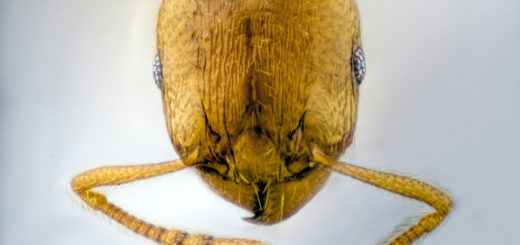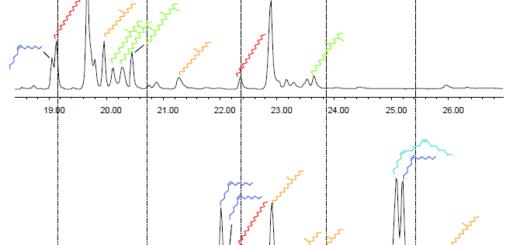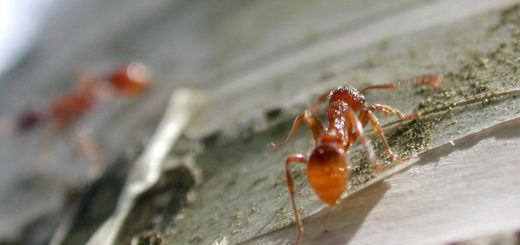Red wood ants (Formica rufa group) as a model for comparative studies of hybridization and speciation
Ants of the Formica rufa group, also known as red wood ants, have fascinated European myrmecologists for decades for their impressive mound nests, behaviors, and ecological role. Under the latest taxonomic framework, in the Palearctic region, the group is thought to comprise 13 closely related species exhibiting a range of ecological and social behaviors, as well as subtly different morphological phenotypes. Reticulate evolution, introgression, and a staggering frequency of hybridization make the evolutionary history of the group a difficult puzzle of great interest. Here, Jessica Purcell introduces us to the latest article by Järvinen et al. entitled “Isolated hybrid wood-ant population Formica aquilonia × Formica lugubris in subarctic Finland” and published in Myrmecological News, which uncovers some of the secrets of a highly fascinating hybrid population in Finland.
A review by Jessica Purcell

Edit by Enrico Schifani, compiled by Salvatore Brunetti


The first time I paid attention to red wood ant mounds was on a family trip to Denmark during my undergraduate years. The mounds were common in the open woodland we visited, and the largest were taller than me! At the time, I thought more about the ecological importance of these abundant ecosystem engineers than about their potential to answer big questions in evolution, but they made a lasting impression on me. Nowadays, Formica ants are emerging as an excellent model system for evolutionary genetic research, both to understand different stages of the speciation process and to investigate the genetic architecture underlying complex social traits. A new article by Järvinen et al. in Myrmecological News highlights the importance and ubiquity of hybridization in this genus. The authors characterize a long-standing hybrid population of wood ants in northern Finland, which was formed in a relatively rare cross between parental species Formica aquilonia and F. lugubris. According to Seifert (2021), rufa group wood ants frequently hybridize, but the most common crosses are F. rufa x F. polyctena and F. aquilonia x F. polyctena.
To support their description of the F. aquilonia x F. lugubris population at Mt. Saana in the northwestern corner of Finland, Järvinen et al. collected detailed quantitative morphological data and used the NUMOBAT system (= Numeric Morphology-Based Alpha-Taxonomy, see Seifert (2021)) to show that putative hybrids are morphologically intermediate between the two parental species. They included several hybrids collected from other populations, showing that independently derived hybrids between the same parental species have similarly intermediate morphological features. In addition, the authors produced a whole genome sequence for one putative Mt. Saana hybrid, which they analyzed alongside previously published genomes of five wood ant species, including one other hybrid individual (Satokangas et al. 2023). Their results are consistent with a hybrid origin of the Mt. Saana population.
In addition, the authors searched for nearby populations of the two parental species, finding a sympatric F. lugubris population. The nearest F. aquilonia population was at least 35 km away, however, suggesting that there is little or no opportunity for contemporary gene flow with the hybrid population and F. aquilonia. To better understand the history of the hybrid population, the authors describe in detail the climatic history of the region. They infer that a warming period 6000-8000 years ago likely resulted in the arrival of favorable, continuous habitat, providing an opportunity for F. aquilonia and F. lugubris to hybridize. Subsequent cooling conditions resulted in the fragmentation of appropriate habitat, with the southern slopes of Mt. Saana providing a small island of favorable habitat. Thus, the authors hypothesize a relatively ancient origin of the contemporary hybrid population.
The F. lugubris x F. aquilonia hybrids described by Järvinen et al. are notable for several reasons. First, finding a stable and long-standing population of a rarer hybrid combination provides an opportunity for comparative research on the consequences of hybridization. Second, the hybrid population at Mt. Saana is currently sympatric with a F. lugubris population, raising questions about what barriers prevent continuing gene flow between the hybrid and parental populations. Third, the authors infer that the hybridization event that gave rise to the hybrid population occurred during a period of warming 6-7000 years ago (or a conservative ~240+ generations, assuming a queen lifespan of 25 years), and that contemporary gene flow between the parental species and hybrid populations is unlikely. Thus, this study highlights two axes of variation that can be used to enhance our understanding of barriers to gene flow between incipient species and of the genetic consequences of hybridization.
The first axis spans taxonomic variation in the parentage of hybrid populations. Specifically, researchers can leverage the variety of hybridizing species pairs to investigate whether similar portions of the genome introgress and/or become established in hybrid populations in independent crosses. In this case, the parts of the genomes of hybrids derived from F. aquilonia could be compared to the well-studied hybrid populations between F. aquilonia x F. polyctena (e.g. Nouhaud et al. 2022)to address whether similar F. aquilonia genomic regions tend to persist in hybrids when F. aquilonia hybridizes with other species. More generally, researchers can leverage the many hybrid zones and hybrid populations found in wood ants and in other Formica taxa (e.g. Purcell et al. 2016) to ask whether genomic regions exhibiting Bateson-Dobzhansky-Muller incompatibilities (Heidbreder et al. 2025) are shared across hybrid zones in congeneric species pairs.

The second axis of variation that is highlighted by this study is that of the age of the hybrid zone or population. Järvinen et al. suggest that the Mt. Saana hybrid population has been stable for several hundred generations, which is far longer than the estimated ~34 generations since the hybridization event that formed the known F. aquilonia x F. polyctena hybrid populations (Nouhaud et al. 2022). Additional genomic sequences from the Mt. Saana hybrid population would be useful in adding a more direct line of evidence to this estimate of hybrid population age (e.g. using the site frequency spectrum, following Nouhaud et al. 2022), but any variation in the timing of the most recent hybridization event still raises interesting research questions. Along the same lines, comparing hybrid populations with ongoing gene flow, as in the hybrid zone between F. selysi and F. cinerea in the Rhône Valley of Switzerland (Purcell et al. 2016), with hybrid populations that have no contemporary gene flow from parental populations will be useful. Variation in the duration of a hybrid zone allows us to ask about the consequences of hybridization: what factors limit backcrossing with parental species in young versus old hybrid populations? How much genetic variation persists in zones of different ages? What are the genetic consequences of ongoing gene flow, as compared to closed hybrid populations without continuing gene flow? The variety of forms of hybridization and speciation in this group provides ideal conditions for comparative studies that will facilitate general insights into the process of speciation in ants.
References Cited
Heidbreder, P., Poikela, N., Nouhaud, P., Puukko, T., Lohse, K. & Kulmuni, J. 2025: Genomic incompatibilities are persistent barriers when speciation happens with gene flow in Formica ants. bioRxiv.
Järvinen, A., Seifert, B., Satokangas, I., Savolainen, R. & Vespäläinen, K. 2025: Isolated hybrid wood-ant population Formica aquilonia × Formica lugubris in subarctic Finland. Myrmecological News 35: 189-200.
Nouhaud, P., Martin, S.H., Portinha, B., Sousa, V.C. & Kulmuni, J. 2022: Rapid and predictable genome evolution across three hybrid ant populations. PLoS Biology 20: e3001914.
Purcell, J., Zahnd, S., Athanasiades, A., Türler, R., Chapuisat, M. & Brelsford, A. 2016: Ants exhibit asymmetric hybridization in a mosaic hybrid zone. Molecular Ecology 25: 4866-4874.
Satokangas, I., Nouhaud, P., Seifert, B., Punttila, P., Schultz, R., Jones, M.M., Sirén, J., Helanterä, H. & Kulmuni, J. 2023: Semipermeable species boundaries create opportunities for gene flow and adaptive potential. Molecular Ecology 32: 4329-4347.
Seifert, B. 2021: A taxonomic revision of the Palaearctic members of the Formica rufa group (Hymenoptera: Formicidae)– the famous mound-building red wood ants. Myrmecological News 31: 133-179.





Recent Comments